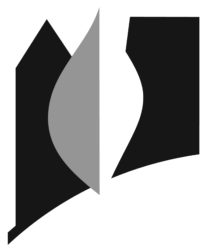AUTHOR PROSPECTUS GUIDELINES
Thank you for considering New Village Press to publish your book. To help us evaluate your proposed work, we offer the following guide for drafting a prospectus. In addition to describing your book, a prospectus will explain why you are writing it, who will read it, and the features or qualities that set your book apart from the competition. You, yourself, will likely find a prospectus useful in planning your book, however, don’t feel obligated to follow our guidelines to the letter. Should you have an existing prospectus that includes much the same content, feel free to submit it as is.
Please study our website to determine if our press is a good match for your proposed book. If you did not receive this guide directly from an editor, we recommend sending an email query before submitting a full book prospectus.
We prefer digital submissions. Please send to: Acquisitions Editor <acquisitions@newvillagepress.net>
THE BOOK
1. Proposed Book Title: Subtitle (if planned):
2. Author(s) Contact Information: Provide addresses, phone, and email of all authors and primary contributors. Indicate how best to reach you (home or business, hours, email or phone, etc.)
2.a. If your book is a project of an organization or institution, please provide full organizational contact information, your title/relationship, and a brief description of the organization.
2.b. If your book is a component of a larger project, please provide project name and URL, if any. Attach supplemental information about the project to this prospectus, if useful.
3. Subject Matter: Describe your book’s primary topic, approach to it, level.
4. Your Rationale: Describe your intentions in creating this book, why the book is needed, and your goals for the book.
5. Key Features: Using a numbered or bulleted list, show the primary intended features of the book. These could be significant chapter topics, special illustrations, and anything else that makes your book distinctive.
INTENDED READERS
6. Audience: Describe your core audience, including a profile of the intended reader and anything that would assist a publisher in determining where and how to promote this book. If your book has multiple audiences, please describe distinct reader segments separately rather than giving generalities, ranges, or averages. Please also provide a target reader hierarchy of primary, secondary, etc.
7. Associations: List those professional associations or special interest groups who would want to know about your book. Include key contacts if known.
8. Course Use: If intended for classroom use, tell the level of the book, imagined course name or general subject(s) your book would complement, and how else to identify appropriate target schools. If this book is useful for popular (informal) education, describe a few typical settings/situations in which the book could be used. Do you intend to class-test the material? Describe what challenges may exist for curricular use and course adoption and how these can be overcome.
9. Similar/Competing Books: Cite the two to four closest books to yours and briefly describe in a paragraph or table how your book is different from, or better than, each of them. Please identify the author, title, publisher, date of publication, and price of these closest books. Note: stating that your book has no competition is not an acceptable response.
BOOK SPECIFICATIONS
10. Length: Estimate approximate length of your manuscript. Describe this in number of words.
11. Visuals: If your book will have visuals, please describe kind and number. If you are creating graphic files, tell what programs are being used or the format of exported files.
12. Status: How many chapters of your book have been drafted? How many illustrated? How long do you estimate it will take to finish a complete manuscript draft, including obtaining permissions for any copyrighted content? Do you have existing deadline commitments for this book?
13. Supplements: Describe any supplements to the book (CD-ROM, documentary film, website, etc.).
AUTHOR QUALIFICATIONS
14. Please introduce yourself and your qualifications for writing this book (no need to be modest). Attach a resume for each author or primary contributor, emphasizing the educational, professional, and practical experiences related to the content and audience for the book.
15. Reviewers/Advisors: Please recommend the name of any potential reviewers or existing book advisors. Include anyone who has already critiqued your efforts.
16. Prior Recognition: Are there articles, reports, or letters from people or institutions who have recognized your previous or current work in this field? Please describe, quote, or attach such documents.
17. Future Books: If you have definite plans for other books, briefly list them.
CONTENTS OUTLINE
18. Outline: Prepare a comprehensive table of contents for the proposed book, indicating the chapter titles using descriptive language. If appropriate, group the chapters into parts, with numbers and titles. For each chapter: provide a paragraph or two describing the topics to be emphasized, in the sequence in which you plan to present them.
19. Sample Chapters: Submit one or two sample chapters for the proposed work.
20. Summary Sentence (required): In one sentence, please describe your proposed publication.
21. Other Work: If possible, submit a copy of one of your previously published works that is most similar to the book you plan to publish.
NEW VILLAGE PRESS
New Village Press is a public-benefit publisher devoted to the building of vibrant, equitable communities. Our books serve the fields of social justice, community development, ecology, and community-based arts and culture. The Press crosses boundaries between professional, academic, and informal education with books that engage practitioners and community activists working together to heal social wounds and vitalize neighborhoods.
